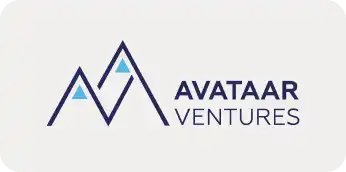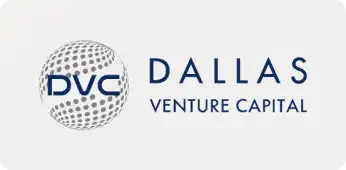A startup is a dream for many – most often that dream is to spot a problem, build a product, find a few customers, raise funds, and have a successful life with media coverage… you get the drift. However, if you have been around the startup ecosystem for a while, you’d know that this dream could come crashing very fast.
In your startup journey, it’s normal for you to hit a number of roadblocks and as someone put this into perspective, your success is but one more attempt after failure.
So, while you plan to build a product, team, business, and everything else, it is important that you also prepare for if things don’t work out your way, because
- Your visibility into the downside helps you avoid them
- You’ll be able to get the best outcome in those situations if they were to happen
From my experience of running CanvasFlip, an on-cloud design collaboration tool for 4 years, raising funds, and selling it to Freshworks, I believe that failures (product, distribution, hiring, and strategic) generally show up at 4 stages of a startup:
- Failures at the idea stage
- Failures at the product-building stage
- Failure at the GTM to PM fit stage
- Failures at the growth stage
Idea stage
Can you guess what’s the top reason for startups to fail? Let me give you a hint – It’s not running out of money. Almost 42% of the time startups fail because no one needs what they have built.
Let’s look at the top 2 causes of failure in this stage and the nuances that come with them
1. Not finding an actual problem to solve
Believe it or not, most startups fail because their products don’t solve a pressing need and no one is willing to pay for them. An early sign for this failure is if you acquire most of your users through your personal connections.
While this varies across startups, For under $5,000 ACV, at least 30% of your first 100 customers should find your product on the internet (Google Search, Facebook ads, influencer video/blog etc.) And for that to happen, your product needs to solve a relevant and core problem, and not just offer superficial benefits.
For example, I thought if I added analytics capabilities (video recording, heatmap, etc.) on top of my mock-up prototype, every designer would absolutely want to use my product. Well, they didn’t, because my product, as a whole, wasn’t solving a critical need of theirs.
2. Not zeroing in on the user persona
Another huge mistake early entrepreneurs make is the one-size-fits-all product approach. It is lucrative to acquire customers across different team sizes, stages of the customer company, SMB v/s MM v/s Enterprise. When in reality, it’s a trap.
Here’s why it doesn’t work – the expectation from the product, value discovery, distribution, and customer support varies significantly across user personas. At an early stage with limited resources and a small team, it is impossible to handle this.
A good start is to list out all possible user personas and evaluate who will be the most benefited from your product, shows the fastest time to value discovery, and has a large segment size.
Example – At CanvasFlip, if we had focussed on users from mid-size design consulting teams using Invision/Figma prototypes – we’d have had fewer product efforts, large players as our partners, and lesser distribution costs – resulting in a higher chance of success and lower cost of failure.
Don’t start building from the idea. Draw it on paper/Google Slide/mockups, get soft commitments from a few potential buyers and build with them. Iterate and narrow down as much as possible.
Product building stage
Once you have validated the idea, chances are that you have a good understanding of what to build and for whom. Now you have to build a product and try to float it in the market. That means you need a website, some branding, a price tag on your product etc.
Here’s why most startups fail at this stage.
1. Distractions
If you are “the idea” guy, you’d never be short of them. Thanks to the eureka moment, you’ll keep abandoning an idea with a much larger potential, for the next cool idea you just came up with.
Create an experiment around the idea—for example, you need x sign-ups within 30 days on the dummy landing page—and don’t work on any new idea till that is completed.
2. Ignoring early customers
Don’t ignore the early users you got during the idea validation stage. Get them on a demo and try to get something in return from them in the meantime (introduction to more customers, promoting your product on social media, anything.)
3. Not working with the right team
If you are doing it alone – you are probably doing it wrong. Sooner or later, you’ll need more people to help you build your product, sales motion, and other functions. In fact, most of your success will depend on your ability to build the right team.
If you have a team, make sure they are aligned with your plans and timelines. Hire people for their competency, contribution, and commitment. Avoid the mistake of hiring people for the sake of it.
Also, remember to regularly treat the team to a pizza. 🙂
Early GTM to PM fit stage
Most tech startup founders usually get past the idea and product-building stages, but crossing the go-to-market to product-market fit stage is a true trial by fire.
Here’s why most startups fail at GTM and are likely to die on their way to achieving PM fit.
1. Low competitive advantage
SaaS startups are largely product-driven. But even if you have narrowed down the problem and user persona enough, it is still super hard to build a product that is considerably better than the existing alternatives.
Example – CanvasFlip was much better and could help designers create prototypes faster, but that wasn’t enough for InVision users to switch to CanvasFlip.
A great product alone isn’t enough to build a successful business. Find and build your unique moat – it could be anything from network effects to content to culture.
2. Not being able to find customers to sell to/validate the idea
Even if you get the product right for your target persona, you have to attract and acquire more such customers. Most founders make the mistake of finding customers in their inner circle – friends, and acquaintances. It’s a trap!
In SaaS, what really matters is that customers whom you don’t know are able to find your product, try it out, and pay for it.
This, of course, changes with large ticket size, tech/integration-heavy companies – and even then, the top-of-funnel discovery has to be inbound/extremely low-touch.
3. Business model/pricing failures
SaaS is usually a high-margin business (~80% is a good benchmark) which essentially limits how low you can go to attract customers.
Most early-stage founders fail to assess the cost of long-term server infrastructure, customer support, re-engagement cost etc., and end up keeping the price too low.
The thumb rule here is to keep the price high and then offer a discount if required, instead of lowballing the price.
4. Pivot not taken/didn’t work
All the above points, product, marketing, and business model are usually iterative and take some time to get in sync with each other.
Most often than not, you may need to pivot midway – offer a different value proposition – to a different customer – at a different price point.
Not being able to strike the right balance between pivoting and being persistent is where most of the failures happen.
At CanvasFlip, we pivoted 4-times before we hit 50,000 customers for one of our popular website collaboration tools – Visual Inspector.
- Running out of money
While pivoting does sound like a sure-shot way to get to success, you have limited resources and can only pivot and iterate so many times.
Raising investment may sound like an obvious choice here – but raising funds too early/late has also caused many startups to fail.
To avoid failing due to financial shortfall, iterate carefully with the above steps and make sure you have enough runway for all your experiments.
Growth stage
Once you’ve hit the product-market fit stage, chances are you are going to have a long-term stable business at hand.
But that still doesn’t mean you’ll definitely get to the next level unless you avoid these failures.
1. Not being able to hire at scale
Hiring is hard, especially if you are a new kid on the block. You hire people from your inner circle and the first few reasonable applicants you get. And that is a big problem.
If you are a people person, only the first few key hires should come from you. Your CTO should be responsible for building the product/engineering team. Otherwise, the first hire should be an HR/consulting agency.
2. Bad business model
SaaS businesses are built for scale and typically scale with users/usage. But at times, we plan to build the data pool and try to make money out of it later on. Or, offer an extended freemium in hopes that eventually those customers would convert.
Have a good sense of value discovery/aha moments, and make sure you have control of the business at scale.
3. Legal/compliance challenges
When you’re growing big, you start dealing with large customers – from around the world. Now, you need to adhere to certain security and compliance requirements. This is often missed at fast-growing startups and can result in major financial and existential crises.
For example, HIPAA is a MUST-have for dealing with healthcare customers in the USA. PCI is a must-have for banking. The thumb rule is to clarify such compliance requirements before onboarding a large customer.
4. Bad culture
To grow fast, you need a lot of people and processes. You can’t have the same close touch with everyone, and you need to rely on a chain of commands. This is where cultural failures creep in.
Culture often has a downward filtration effect – which means, you treat your reportees how your manager treats you.
Set your company’s values and non-negotiables as early as you can.
So, how not to fail
As you can imagine, this list of potential failures is not exhaustive and startups face new challenges every day. For example – even an early-stage small startup might have alignment issues among its members, and products can fail after PM fit. The idea here is to call out common challenges to keep an eye out for them at certain stages.
From talking to many successful founders, I’ve put together 3 simple thumb rules to avoid/overcome these failures.
- Keep the experiments as small and objective as possible
- Be honest with the results
- Don’t hesitate to course-correct
Keep in mind that a failure in the journey will not necessarily mean the end of the startup. But not accepting them in time and course-correcting in a viable way, will sure do.






























